Test: NEET 2016 Past Year Paper - NEET MCQ
30 Questions MCQ Test NEET Past Year Papers - Test: NEET 2016 Past Year Paper
What is the minimum velocity with which a body of mass m must enter a vertical loop of radius R so that it can complete the loop ?
If the magnitude of sum of two vectors is equal to the magnitude of difference of the two vectors, the
angle between these vectors is :
At what height from the surface of earth the gravitational potential and the value of g are -5.4 x 10-7J
kg-2 and 6.0 ms-2 respectively ? Take the radius of earth as 6400 km.
A long solenoid has 1000 turns. When a current of 4A flows through it, the magnetic flux linked with each turn of the solenoid is 4 x 10-3 Wb. The self-inductance of the solenoid is
An inductor 20 mH, a capacitor 50 μF and a resistor. 40Ω are connected in series across a source of
emf V = 10 sin 340t. The power loss in A.C. circuit is
Two identical charged spheres suspended from a common point by two mass less strings of lengths ℓ are initially at a distance d(d << ℓ) a part because of their mutual repulsion. The charges begin to leak from both the spheres at a constant rate. As a result, the spheres approach each other with a velocity v. Then v varies as a function of the distance x between the spheres, as :
A capacitor of 21F is charged as shown in the diagram. When the switch S is turned to position 2, the percentage of its stored energy dissipated is :
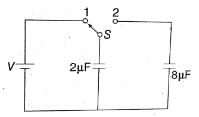
A particle moves so that its position vector is given by r = cosωtx + sinωty. Where ω is a constant.
Which of the following is true?
From a disc of radius R and mass M1 a circular hole of diameter R1 whose rim passes through the centre is cut. What is the moment of inertia of the remaining part of the disc about at perpendicular axis, passing through the centre ?
The ratio of escape velocity at earth (ve) to the escape velocity at a planet (vp) whose radius and mean density are twice as that of earth is :
A potentiometer wire is 100 cm long and a constant potential difference is maintained across it. Two cells are connected in series first to support one another and then in opposite direction. The balance points are obtained at 50 cm and 10 cm from the positive end of the wire in the two cases. The ratio of emf's is :
A siren emitting a sound of frequency 800 Hz moves away from an observer towards a cliff at a speed of 15 ms-1. Then, the frequency of sound that the observer hears in the echo reflected from the cliff is : (Take velocity of sound in air = 330 ms-1)
To get output 1 for the following circuit, the correct choice for the input is :
In a diffraction pattern due to a single slit of width 'a' the first minimum is observed at an angle 30 deg when light of wavelength 5000 Å is incident on the slit. The first secondary maximum is observed at an angle of :
When a metallic surface is illuminated with radiation of wavelength λ the stopping potential is V. If the same surface is illuminated with radiation of wavelength 2:, the stopping potential is V/4. The threshold wavelength for the metallic surface is :
When an α-particle of mass 'm' moving with velocity ' v ' bombards on a heavy nucleus of charge 'Ze' its distance of closet approach from the nucleus depends on m as :
Match the corresponding entries of column-1 with column-2. [Where m is the magnification produced
by the mirror]
Column - 1 Column - 2
(A) m = -2 (a) Convex mirror
(B) m = -1/2 (b) Concave mirror
(C) m = +2 (c) Real image
(D) m = =1/2 (d) Virtual image
A particle of mass 10 g moves along a circle of radius 6.4 cm with a constant tangential acceleration. What is the magnitude of this acceleration if the kinetic energy of the particle becomes equal to 8 x 10-4J by the end of the second revolution after the beginning of the motion ?
A small signal voltage V(t) = V0 sinωt is applied across an ideal capacitor C :
A disk and a sphere of same radius but different masses roll off on two inclined planes of the same altitude and length. Which one of the two objects gets to the bottom of the plane first ?
Coefficient of linear expansion of brass and steel rods are α1 and α2 . Lengths of brass and steel rods are ℓ1 and ℓ2 respectively. If (ℓ2 - ℓ1 ) is maintained same at all temperatures, which one of the following relations holds good ?
A astronomical telescope has objective and eyepiece of focal lengths 40 cm and 4 cm respectively. To view an object 200 cm away from the objective, the lenses must be separated by a distance :
A uniform circular disc of radius 50 cm at rest is free to turn about an axis which is perpendicular to its plane and passes through its centre. it is subjected to a torque which produces a constant angular acceleration of 2.0 rad s-2. Its net acceleration in ms-2 at the end of 2.0 s is approximately :
A refrigerator works between 40 celcius and 300 celcius. It is requiredto remove 600 calories of heat every second in order to keep the temperature of the refrigerated space constant. The power required is :(Take 1 cal = 4.2 Joules)
A gas is compressed isothermally to half its initial volume. The same gas is compressed separately through an adiabatic process until its volume is again reduced to half. Then
The intensity at the maximum in Young's double slit experiment is I0. Distance between two slits is d = 5λ, where λ is the wavelength of light used is the experiment. What will be the intensity in front of one of the slits on the screen placed at a distance D = 10d ?
Two non-mixing liquids of densities ρ and nρ (n > 1) are put in container. The height of each liquid is h. A solid cylinder of length L and density d is put in this container. The cylinder floats with its axis vertical and length pL (p < 1) in the denser liquid. The density d is equal to
Consider the junction diode as ideal. The value of current flowing through AB is :
A car is negotiating a curved road of radius R. The road is banked at an angle .. The coefficient of friction between the tyres of the care and the road is 1s. The maximum safe velocity on this road is:
A long straight wire of radius a carries a steady current I. The current is uniformly distributed over its cross-section. The ratio of the magnetic fields B and B`, at a radial distances a/2 and 2a respectively, from the axis of the wire is:
|
94 docs|192 tests
|


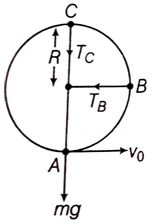










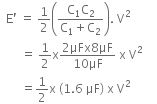

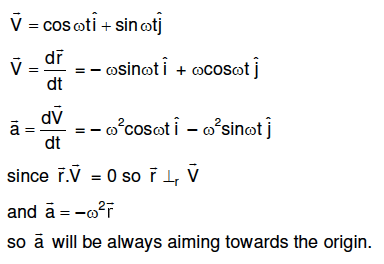

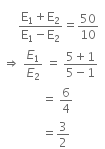


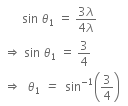





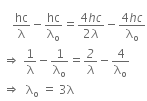




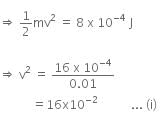
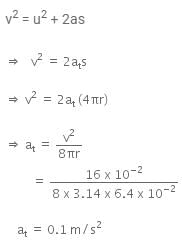



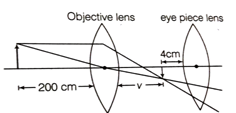
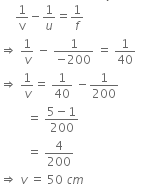
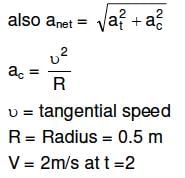


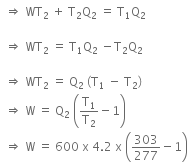
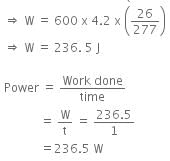
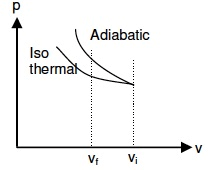



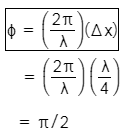



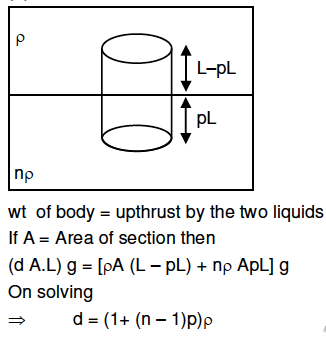
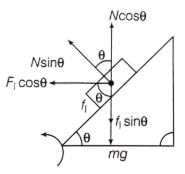
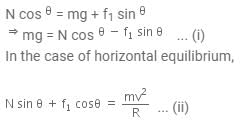
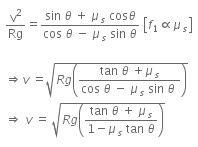

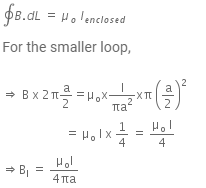

 at a distance 2a from the axis of the wire.
at a distance 2a from the axis of the wire.















